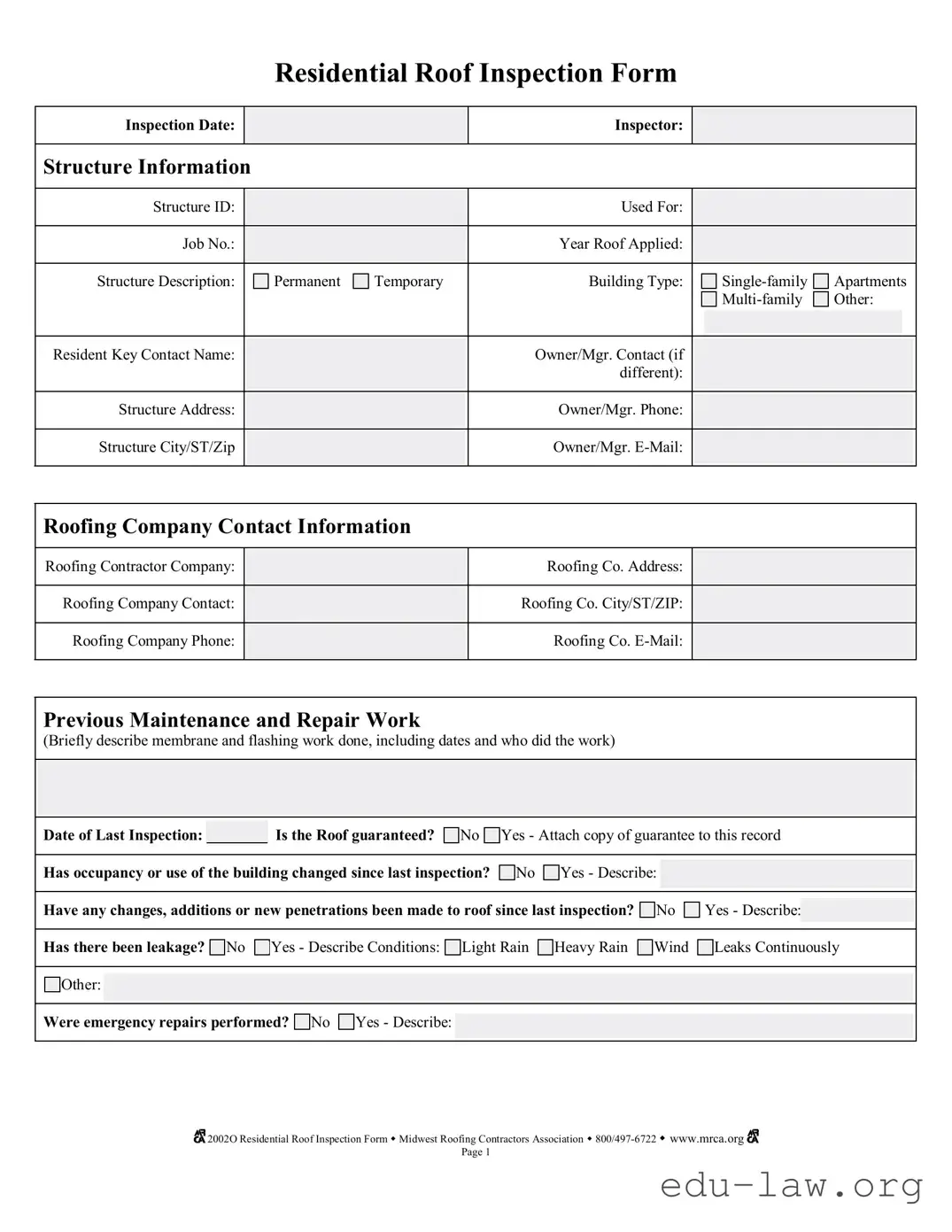What information is required for the Residential Roof Inspection Form?
The Residential Roof Inspection Form requires various details, including the inspection date, name of the inspector, structure information such as ID, job number, and type of building (single-family, apartments, etc.). Contact information for the owner or manager must be included along with details about the roofing company. Previous maintenance and repair work should be briefly described, and specific conditions of the roof must be documented.
How should previous maintenance and repair work be reported?
Previous maintenance and repair work should be summed up briefly, including information about the type of work done, relevant dates, and who performed the maintenance. This documentation aids in understanding the service history and helps the inspector identify potential problem areas during the inspection.
What should be noted if there has been leakage?
If leakage has occurred, it is crucial to specify the conditions under which it was observed. The inspector should indicate whether it happened during light rain, heavy rain, or high winds, and specify if the leaks occurred continuously or under specific circumstances. This detail helps in assessing the severity of the issue.
What actions are recommended if the roof condition is classified as "Poor"?
If the roof condition is rated as "Poor," immediate action is recommended. This may involve repairs or a complete overhaul, depending on the specific issues identified. The form prompts the inspector to take action and revise management practices to mitigate further damage. Documentation of the findings will guide further decisions.
Is it necessary to attach the guarantee for the roof?
If the roof is guaranteed, attaching a copy of that guarantee to the inspection form is essential. This serves as an important reference for potential claims regarding the warranty coverage and ensures that all relevant information is easily accessible for future inspections or maintenance decisions.


 2002O Residential Roof Inspection Form w Midwest Roofing Contractors Association w
2002O Residential Roof Inspection Form w Midwest Roofing Contractors Association w 

 2002O Residential Roof Inspection Form w Midwest Roofing Contractors Association w
2002O Residential Roof Inspection Form w Midwest Roofing Contractors Association w 

 2002O Residential Roof Inspection Form w Midwest Roofing Contractors Association w
2002O Residential Roof Inspection Form w Midwest Roofing Contractors Association w 

 2002O Residential Roof Inspection Form w Midwest Roofing Contractors Association w
2002O Residential Roof Inspection Form w Midwest Roofing Contractors Association w 

 2002O Residential Roof Inspection Form w Midwest Roofing Contractors Association w
2002O Residential Roof Inspection Form w Midwest Roofing Contractors Association w 